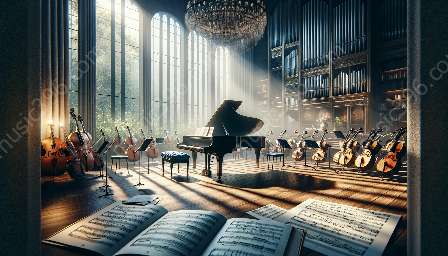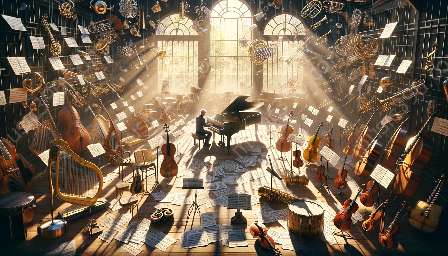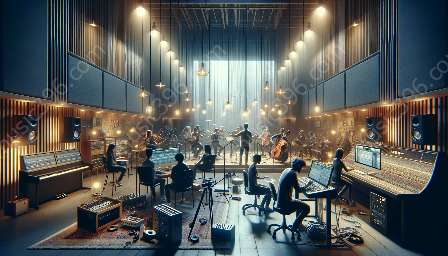Musical forms and structures are profoundly influenced by cultural and historical contexts, which shape the way we perceive and understand music. Understanding the impact of these contexts is essential for comprehending the evolution and diversity of musical traditions and compositions.
Overview of Cultural and Historical Contexts
Cultural and historical contexts encompass a wide range of factors that affect the creation, reception, and interpretation of music. These include the social, political, religious, technological, and economic conditions in which music is produced and consumed. For example, the music of a particular culture might reflect its rituals, beliefs, and values, while historical events such as wars, revolutions, and migrations can profoundly influence musical expression.
Cultural Diversity and Musical Forms
Each culture has its own unique musical language, repertoire, and performance practices, which are closely tied to its cultural identity. Musical forms, such as rhythm, melody, harmony, and timbre, are shaped by cultural aesthetics and conventions. For example, classical Indian music is characterized by intricate rhythmic structures and improvisational traditions, whereas Western classical music often emphasizes harmony and formal structures.
Moreover, cultural diversity contributes to a rich tapestry of musical forms, as different traditions and genres coalesce and interact. This diversity is evident in the fusion of traditional and modern elements in world music, the influence of global popular music on local traditions, and the emergence of new hybrid genres and styles.
Historical Evolution of Musical Forms
The historical context of music encompasses the evolution of musical forms over time, as well as the impact of key historical periods and movements. For example, the development of Western art music is intimately tied to the Renaissance, Baroque, Classical, Romantic, and modern eras, each of which brought distinct changes in musical structure, tonality, and expression.
Similarly, non-Western musical traditions have been shaped by their own historical trajectories, such as the influence of colonialism, globalization, and cultural exchange. Understanding these historical paths provides insight into the formation of musical forms and structures within specific cultural contexts.
Perception and Interpretation of Musical Forms
The perception of musical forms is greatly influenced by cultural and historical contexts, as they determine how individuals understand and experience music. Cultural attitudes towards rhythm, melody, harmony, and tonality can vary widely, leading to differing interpretations and aesthetic preferences.
Cultural Interpretation of Musical Elements
In various cultures, specific musical elements carry distinct symbolic meanings and emotional connotations. For example, certain melodic patterns may evoke spiritual or ritualistic associations, rhythmic structures may reflect communal traditions or dance practices, and harmonic progressions may convey social or emotional narratives.
Moreover, the use of musical instruments, vocal techniques, and performance styles often reflects cultural values and aesthetics, influencing the way audiences perceive and engage with music.
Historical Reception of Musical Forms
The historical reception of musical forms provides insights into changing attitudes towards musical expression and the evolving tastes of different eras. For example, the Baroque era's preference for elaborate ornamentation and contrapuntal textures contrasts with the Classical era's emphasis on clarity, symmetry, and emotional restraint.
Furthermore, historical reception also encompasses the rediscovery and reinterpretation of music from past eras, shedding light on the enduring relevance of certain musical forms and the impact of historical narratives on contemporary perceptions.
Role of Music Composition in Shaping Musical Structure
Music composition plays a pivotal role in shaping musical structure, as composers draw upon cultural and historical contexts to create innovative forms and styles. Composers navigate the traditions and conventions of their time, while also pushing the boundaries of musical expression.
Cultural Inspiration and Innovation
Composers often draw inspiration from their cultural heritage, incorporating folk melodies, rhythms, and motifs into their compositions. This infusion of cultural elements contributes to the diversity and authenticity of musical forms, providing composers with a rich palette of musical materials to explore and expand upon.
Moreover, composers may challenge existing conventions and norms, introducing new harmonic progressions, rhythmic patterns, and structural innovations that reflect evolving cultural attitudes and artistic movements.
Historical Context and Musical Evolution
Understanding historical context is essential for composers, as it informs their engagement with musical traditions and enables them to engage with the legacy of past composers. By studying historical forms and styles, composers gain insights into the evolution of musical structures and the impact of historical narratives on musical expression.
Global Perspectives and Contemporary Composition
Contemporary composers often engage with a globalized musical landscape, incorporating diverse cultural influences and cross-cultural exchanges into their compositions. This approach reflects the interconnected nature of music in the 21st century, as composers draw from a wide array of musical traditions and historical legacies to create innovative and inclusive musical forms.
Conclusion
The influence of cultural and historical contexts on the perception of musical forms is multidimensional and dynamic, shaping the evolution of musical traditions, the interpretation of musical elements, and the creative endeavors of composers. By examining the interplay of cultural and historical factors within musical form and structure, we gain deeper insights into the diverse and ever-changing nature of music as a universal art form.




























